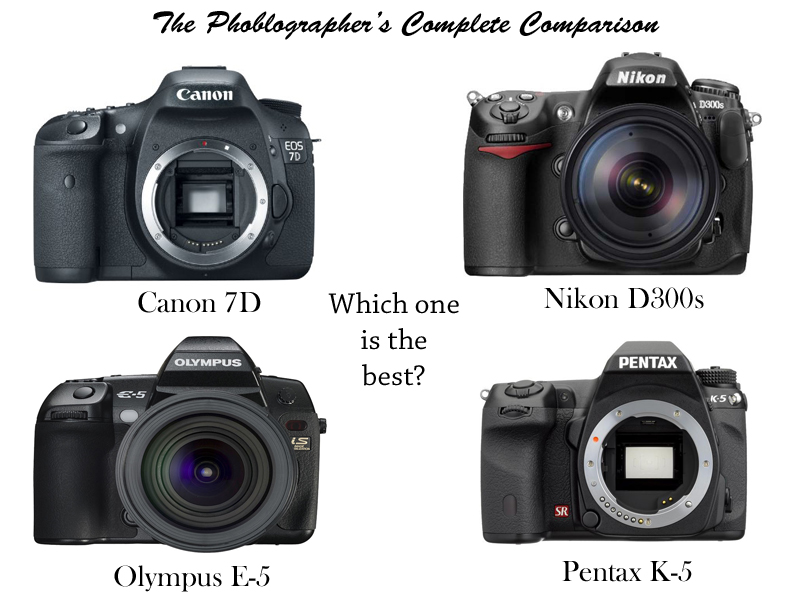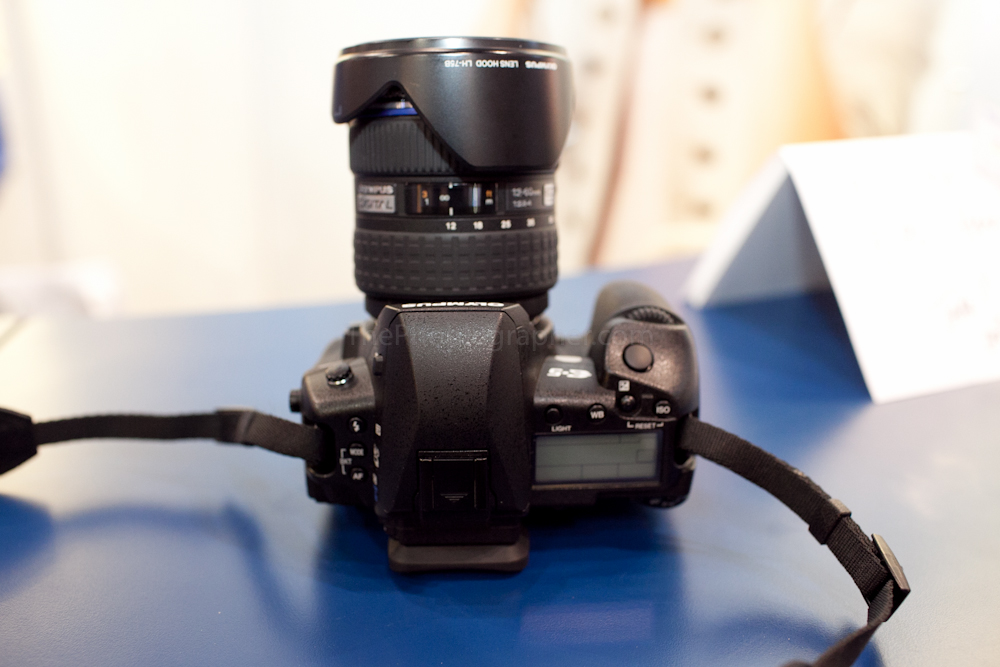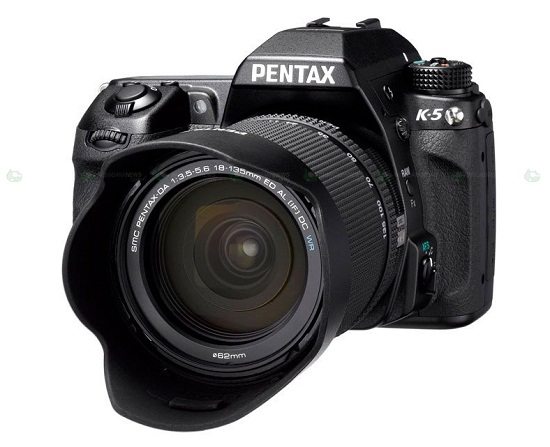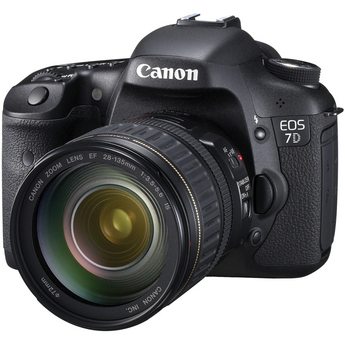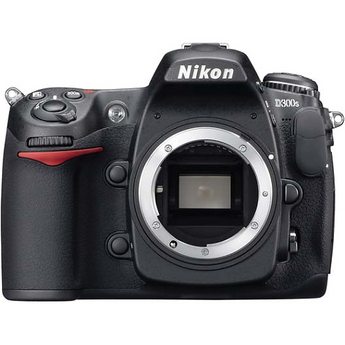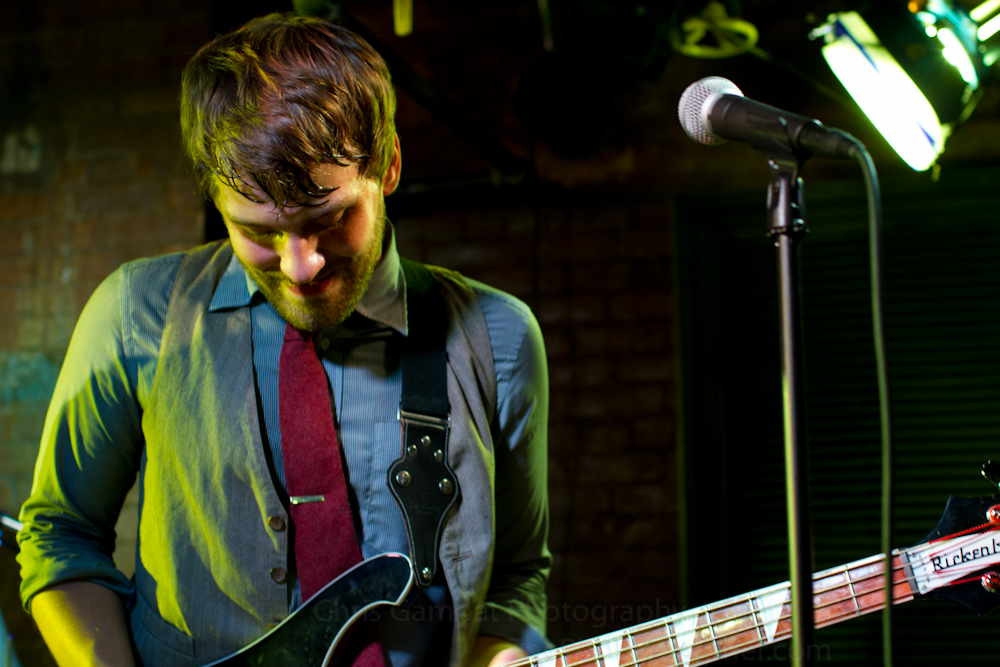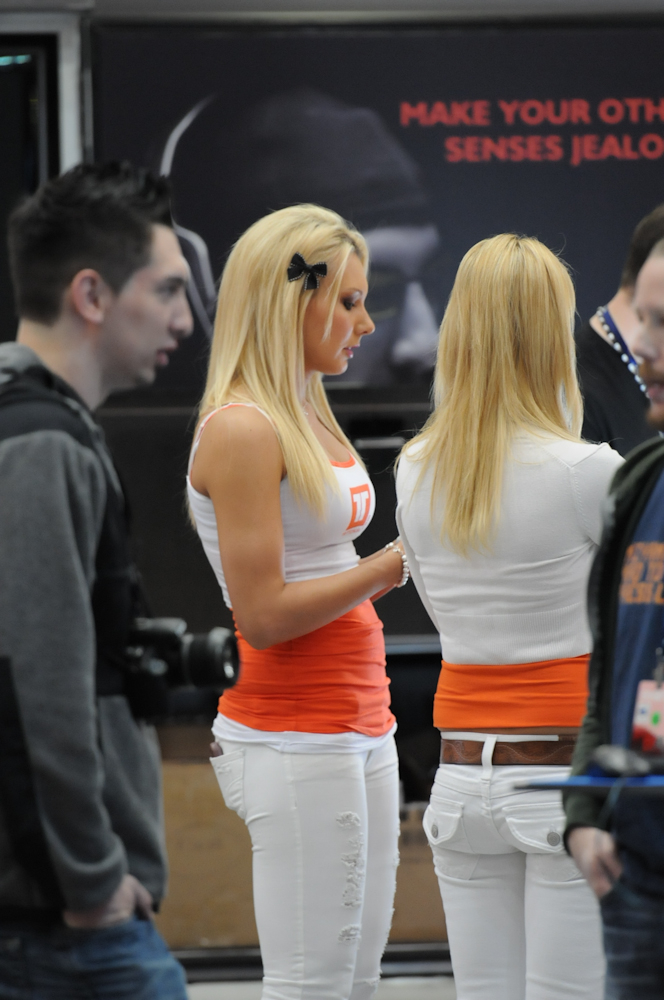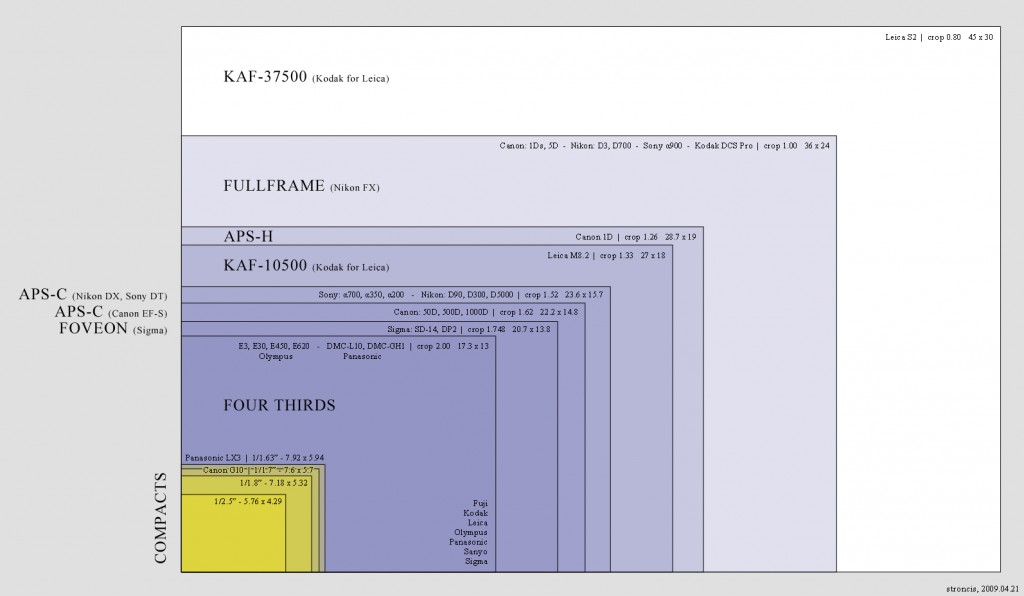Last Updated on 11/13/2011 by Chris Gampat
This is it: the moment you’ve been waiting for if you’ve been trying to figure out which camera to purchase or which one is best for you. After completing long, exhaustive testing of the Pentax K-5, Canon 7D, Nikon D300s and Olympus E-5, we are proud to announce the battle of the flagships shootout. Let’s go!
Editor’s Note: This is a joint posting written by Editor in Chief Chris Gampat and Lead Analyst Matt Beardsley.
Complete Postings for Reference
Olympus E-5
The Complete E-5 Review– I talked a bit more in the complete review about how I used the camera to shoot in the snow for my job.
Day 1– The E-5 impressed me quite a bit early on and I was hoping that it wouldn’t let me down.
Day 2– I took the camera out during a snowstorm in NYC and found that the image quality was very, very good: especially the blues, reds, and greens.
Day 3– Buried under snow for a period of time, the Olympus E-5 survived Hell’s Kitchen. This proved just how tough the camera is.
Day 4– Played with the Art Filters, which proved the camera to be a fun companion if it is indeed your only body.
Day 5– Using the Olympus E-5 with the FL-50r flash to photograph products in a small whitebox. I also tested the high ISOs: which were perhaps the only flaw of this camera with the lack of dynamic range.
Pentax K-5
The Complete Pentax K-5 Review– Matt gave his overall stamp of approval on the camera.
Day 1, Specs, Ergonomics, and Button Layout
Day 2, Customization, Image Quality, and a landscape shoot in the rain
Day 3, Wedding Photography, and Low Light Performance
Day 4, An Engagement Shoot with the K-5
Day 5, Night Photography, Image Quality, and Stabilization
A Quick Look at Pentax K-5 Video
Canon 7D
Night 1– The camera and two prime lenses documented a Jewish Seder during the week of Passover. It performed very well and users of this camera may be asked to actually join a family at dinner and document the happenings as they progress throughout the night.
Day 2– The 7D and 24-105mm F4 L IS went to the giant pillow fight in Union Square. While the FPS kept up, the autofocus couldn’t quite capture the quickly moving combatants at varying distances and at such as fast speed too. But it did withstand the punishment of elbows, heads, shoulders and pillows knocking it about. When the autofocus did work correctly, it captured some wonderful images. If you’re getting into a warzone like this, perhaps you’re better off with a 1D Mk IV.
With the Sun Sniper Camera Strap– This strap has replaced the Canon strap on my 7D as it typically holds my longer lenses during events and it’s also the camera I go to when I need to quickly capture something. Along with the 5D Mk II, I’ve run into nothing that the combined two can’t tackle.
Day 3– Testing at a get-together of NYC gaming journalists at a bar. Autofocus was fine in the dim light and mostly stagnant people. As was the high ISO ability shooting at ISO 3200 and above. All photos were shot in JPEG for truly showing the noise levels.
On the Set of a Podcast- The 7D performed much better in terms of manipulation vs the T2i. Noise levels in movie mode seemed to be the same.
Nikon D300s
The Complete Nikon D300s Review
This isn’t as fully detailed as the Canon review for the reason that this is around the time that the Field Reviews were just starting and didn’t start to evolve into the long and thorough discussions that they became. Admittedly though, much more time was spent with the D300s but enough time was spent with the D300s to make complete conclusions about the camera.
With that said though, I do remember nearly everything about that camera.
Bonus Round: 7D vs the D300s in shooting concerts and in a full on long term test.
Ergonomics
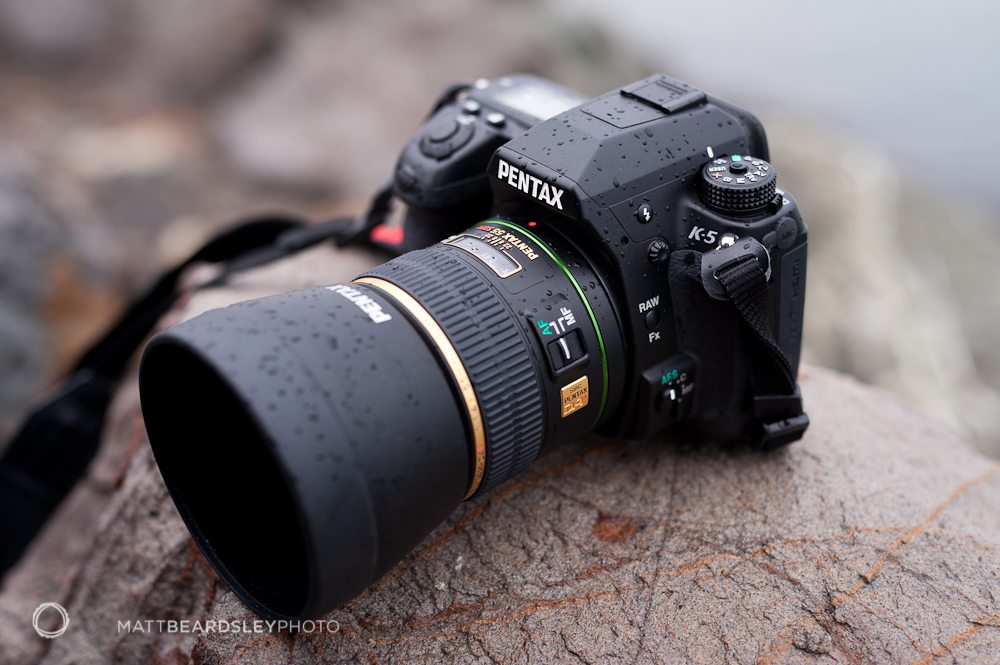
Make no mistake, all of these camera bodies feel very different. The button layout is different and when using one camera and then going to another, your brain will need to rewire itself to get used to using them with your eye not leaving the viewfinder.
Olympus E-5: Hands down, the best grip of each of these cameras. My only quirk was that I used it for a month and my brain was never able to totally rewire itself to not leaving the viewfinder to change the settings.
Pentax K-5: I had hands-on with this camera back at Photo Plus. It felt damned good and Matt had no major qualms with it during the testing. It’s sturdy and rubbery, compact but comfortable, with nicely customize-able controls.
Canon 7D: In all fairness, the Canon 7D has spent the longest time with me because I own one. Every Nikon owner I know loves it because it feels like a Nikon. Ergonomically, I have no problems with it but felt that it was such a strong deviation away from the 5D Mk II that my brain needed to work through the various changes. With that said though, it was the easiest to learn to use without having my eye leave the viewfinder.
Nikon D300s: No questions asked, this was the simplest camera to use of all the ones mentioned here previously. A big congratulations goes out to Nikon for creating a real photographer’s camera in terms of ergonomic build. I was able to learn how to shoot without having my eye leave the viewfinder very quickly, it felt very good with any lens attached to it, and using it was a simple pleasure. It constantly stayed at my side and was even a pleasure to carry around when shooting for fun.
Winner: Nikon D300s
Autofocus
This is the year I feel that every company pulled out all the guns in terms of autofocusing abilities. Each of these cameras performs very well in terms of autofocusing. All of these cameras were paired with top of the line glass from each manufacturer.
Olympus E-5: Very quick and very smart. Just be sure that you don’t keep it in Continuous AF mode if you don’t need it. Otherwise it will constantly hunt for moving targets (almost like it is a heat-seeking missile or something.)
Pentax K-5: When I tested the camera, the focusing was speedy even in low-light situations. It tracks well, has a nice range of points, though it feels a little behind the game compared to the competition.
Canon 7D: I’ve never had a major problem with the focusing on this camera. By far though, it is the most advanced of the bunch with Spot focusing, point focusing, cross type focusing and zone focusing throughout the entire range of focusing points.
Nikon D300s: Simple, accurate, speedy, and reliable. I can’t fault the focusing on this camera but I do think that after setting the standard in the industry for an amazing autofocus system that it is about time that Nikon takes another step forward.
Winner: Olympus E-5 for speed and smarts, but the Canon 7D has the most versatile and advanced AF system of the bunch.
Build Quality
None of these cameras can be faulted. They are all tough, but some are tougher than others.
Olympus E-5: Buried this camera under snow for a while and then took it out to me to document the snowstorm that NYC had. More of this is detailed in the complete review.
Pentax K-5: Matt shot with this camera out in the rain and it survived quite a bit of punishment while still performing very well. It is well-sealed and built like a little brick. Only the slightly less-impressively sound exposure mode dial keeps it from feeling like the most solid here.
Canon 7D: This camera has been bumped around like crazy. It still keeps clicking, but I admittedly haven’t shot in the snow with it. I shot in the snow with the 5D Mk II though. Judging from the better sealing on the 7D, I can conclude that it would survive the snow, but probably wouldn’t survive the torture that the E-5 suffered.
Nikon D300s: Though this camera feels great and was bumped quite a number of times, it never suffered violent abuse.
Winner: Olympus E-5 (damned good job Olympus.)
Ease of Use
Some DSLRs are easier to use than others, but there is a good reason for this. Manufacturers try to cram in as many features as they can to create a product that will stand out from the others. Unfortunately, it isn’t always user friendly. With that said:
Olympus E-5: Most difficult to use in terms of remembering where the buttons were, but the best menu I’ve seen. The back LCD panel displays so much information and it is very easy to read. It reminds me of the days of when Sony actually had simple menus.
Pentax K-5: Similar to the E-5, but the display and layout is a bit more complicated and it doesn’t totally work with the way that the average human eye reads information. It has a huge range of features, which is nice, but it also feels a little too complicated.
Canon 7D: This is a very advanced camera and you’re better off not paying attention to the LCD screen at all. As an alternative, use the top LCD screen or keep your eye in the viewfinder.
Nikon D300s: The D300s is still very much the Nikon D300 with very minor tweaks. With this said, the simplicity of this camera will be very appealing to many users that want a professional camera with an easy to use interface.
Winner: Nikon D300s
Image Quality
This one is going to be a bit tricky for a number of reasons. The E-5 has a Four Thirds sensor while the Canon 7D has a 1.6x APS-C sensor and the D300s and K-5 have a 1.5x crop sensor. Take a look at the chart below.
Olympus E-5: The punchiest colors by far, but the worst dynamic range. This was a major disappointment for me as I’m a former Olympus user.
Pentax K-5: Earlier on, we reported a bit on the sensor performance of this camera. Wonderful dynamic range with very good color depth. However, there is a fringing issue that Matt makes note of often as well as stains as of the time of writing this.
Please also note that he went through two different versions of the 55mm F/1.4 DA Limited.
Canon 7D: Despite the same report stating that the 7D doesn’t have as great a dynamic range as the K-5, I almost beg to differ. While it can’t touch my 5D Mk II, it still is very decent and the two compliment each other well (especially at weddings.)
However, I’d love more color depth and dynamic range.
Nikon D300s: You really can’t find a problem with this camera when paired with good glass. In my tests though, I didn’t find the dynamic range to be as good as I’d expect. I also felt that the ISO performance needed to be stepped up. More on this in the next section.
Winner: Pentax K-5 (if they fix the sensor issue, otherwise this goes to the Canon 7D when coupled with L glass)
High ISOs
This is the thing that scares so many photographers and enthusiasts. If the noise looks film-like, then it’s okay. If there is terrible color banding and other issues though, then we shriek and cover our eyes in horror.
Olympus E-5: Dear Olympus, please switch to an 8MP or 5MP sensor and remarket your cameras towards those that shoot mainly with the intention of shooting for the web. The noise levels on the E-5 above ISO 1600 were nearly unacceptable.
Pentax K-5: In Matt’s head to head high ISO test, the Pentax K-5 confidently beat the Nikon D7000. Note that the D7000 is a lower-level camera than the Nikon D300s. The K-5 has the highest reaching ISO of the bunch, and an awesome range, with perhaps a bit too much in-camera noise reduction (which smooths away a bit too much detail).
Canon 7D: Admittedly, I’ll say that I wish the 7D has better High ISO performance but for the most part, ISO 6400 is usable enough to the point where I shoot at it often during low-light situations.
Nikon D300s: The D300s performs superbly at high ISOs, though I wish that it natively went up to ISO 6400. This forces us to purchase the creme de la creme of the Nikon glass, which is extremely pricey.
Winner: This is a tough one: I want to give it to the Pentax K-5, but there are so many issues with the sensor, so it is going to the Canon 7D. Otherwise, it would have been easily awarded to the Pentax K-5. The D300s wasn’t a major upgrade over the D300; and don’t even talk to me about the E-5’s High ISO performance.
HD Video Quality
This doesn’t need a major run through for the reason that the Canon 7D is what it used by many HDSLR cinematographers, it is on the set of Saturday Night Live, and has helped to flip the HD video industry on its head.
Winner: Canon 7D
Conclusions
The overall winner of this competition will go to the Pentax K-5 when Pentax finally fixes the sensor issues. At the moment though, it is being handed to the Canon 7D. Nikon has almost bastardized the D300s with the release of the D7000 and by only giving it very minor upgrades over the D300. The Olympus E-5 would have won this if it had a greater dynamic range and the high ISO performance wasn’t so terrible.
Questions? Thoughts? Let us know in the comments below.
You Can Purchase These Cameras at:
Please Support The Phoblographer
We love to bring you guys the latest and greatest news and gear related stuff. However, we can’t keep doing that unless we have your continued support. If you would like to purchase any of the items mentioned, please do so by clicking our links first and then purchasing the items as we then get a small portion of the sale to help run the website.


